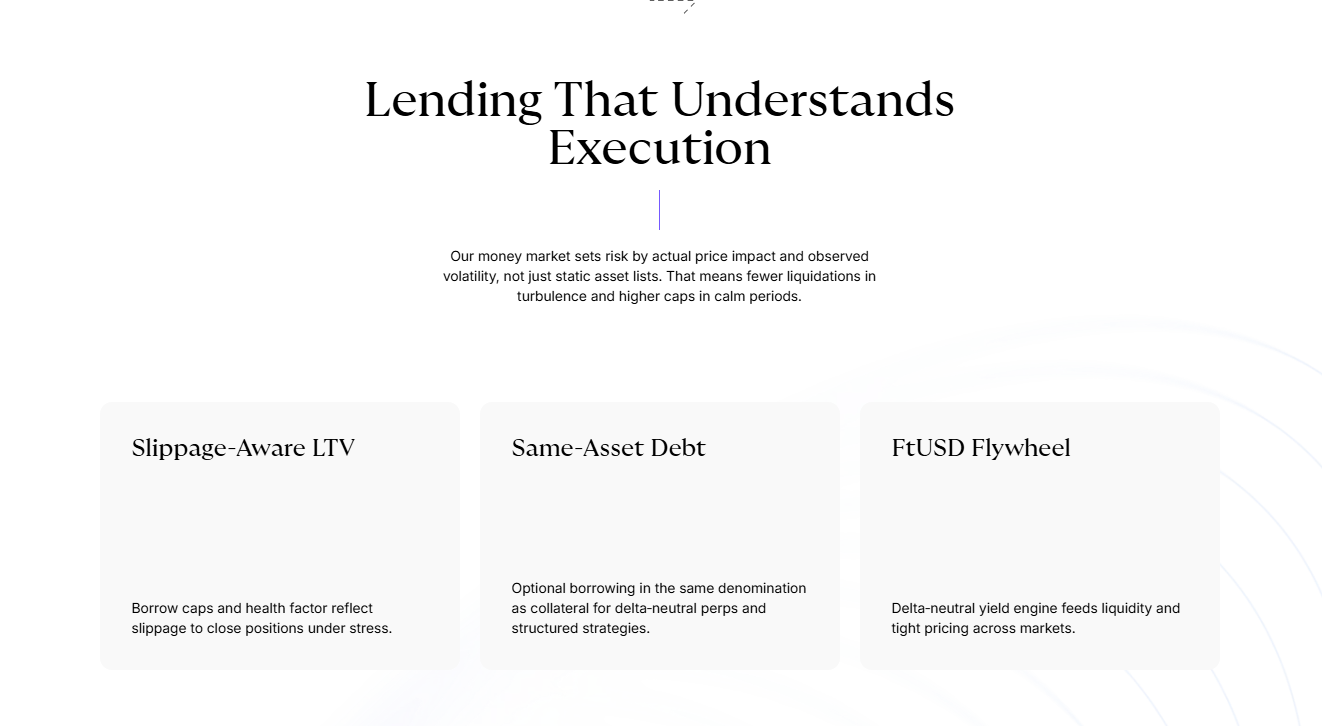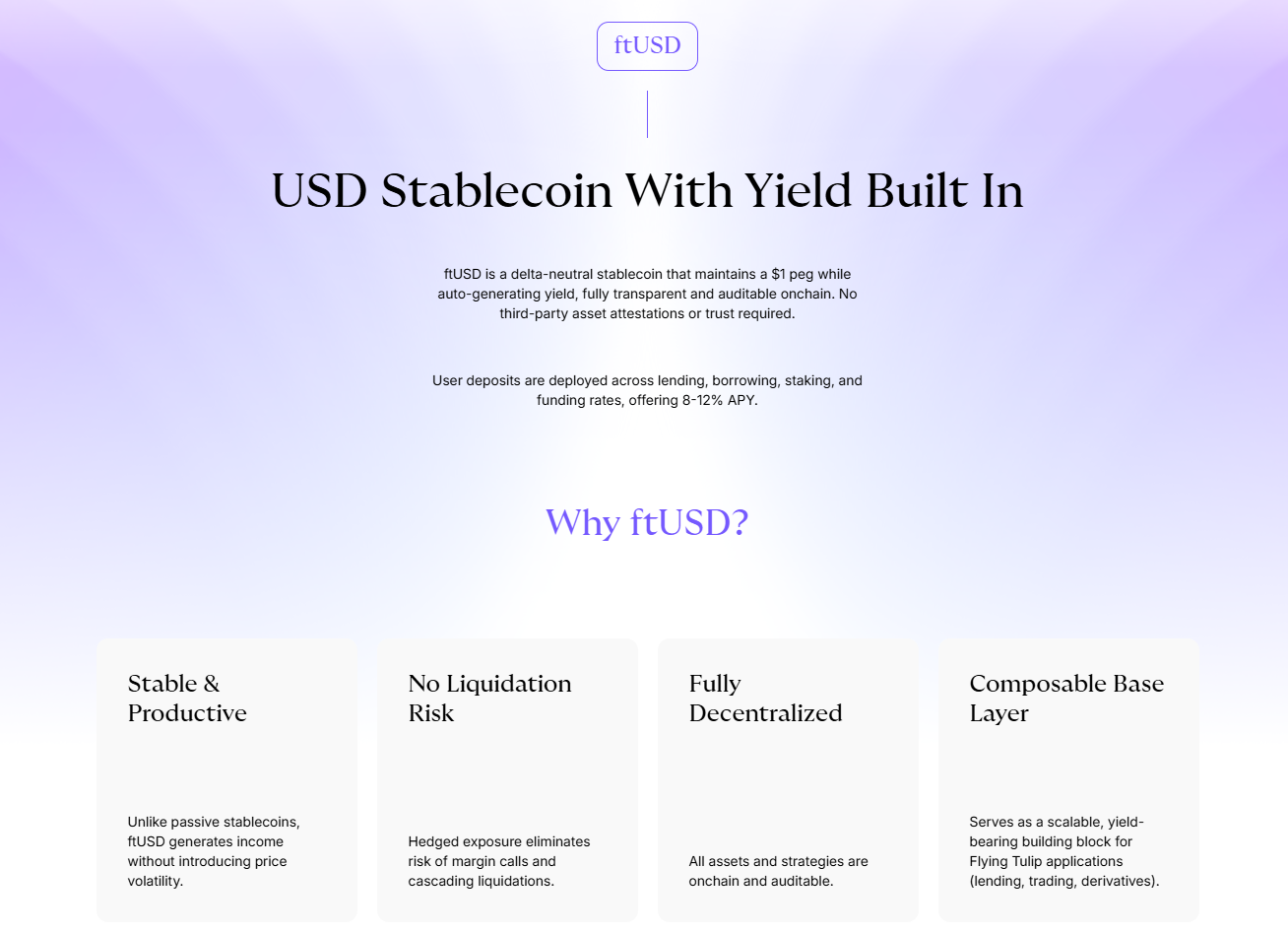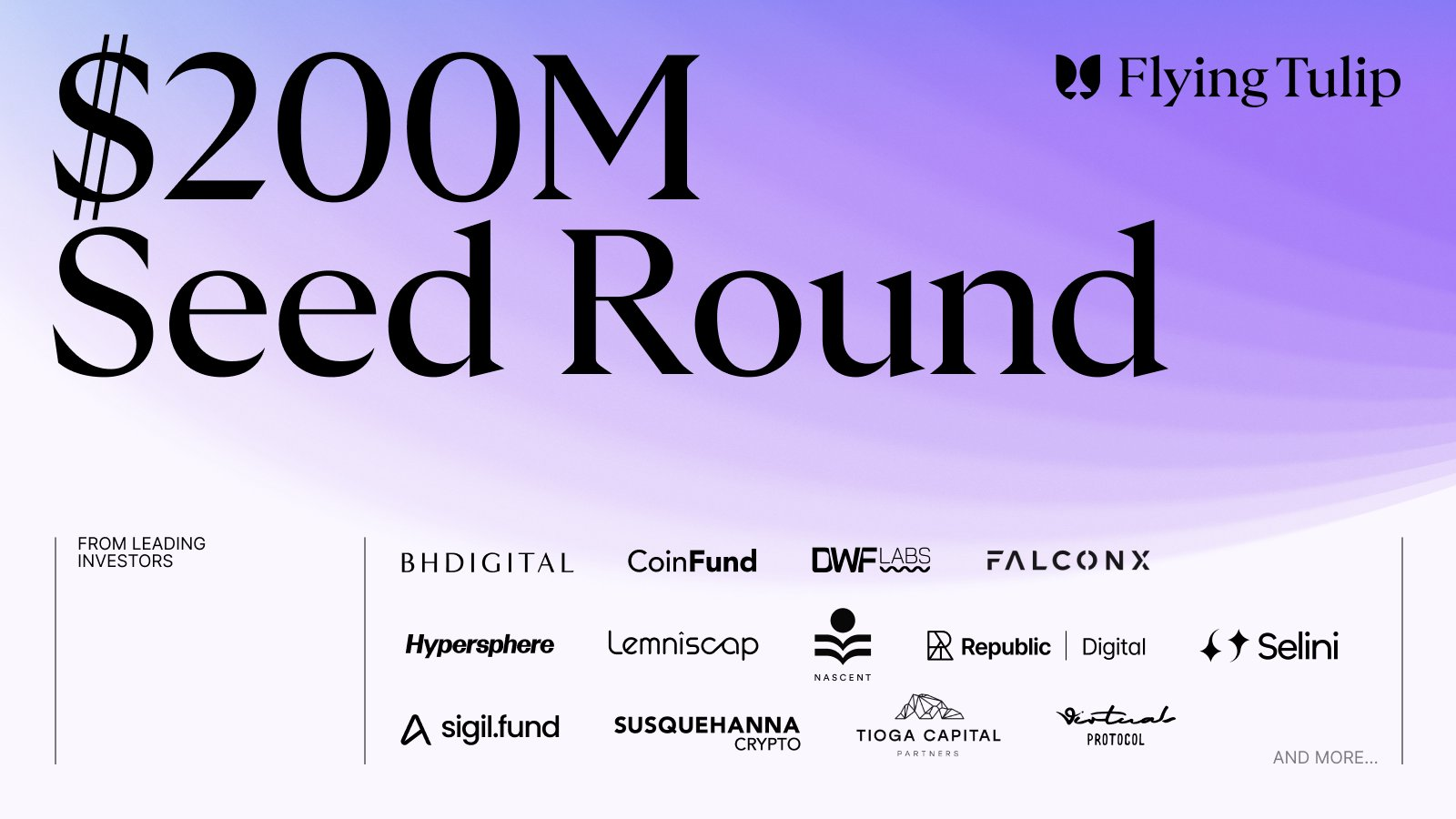In a landscape where most DeFi projects rely on selling their native tokens to fund operations and pay the team, Flying Tulip, led by Andre Cronje, takes a completely different path. Flying Tulip one built on a unique and sustainable financial model. So, what makes Flying Tulip truly stand out?
What is Flying Tulip
Flying Tulip is a comprehensive on-chain DeFi platform founded and led by Andre Cronje, the creator of Yearn Finance and Sonic. The project aims to unify multiple isolated DeFi services into one integrated system including spot trading, derivatives, lending, a native stablecoin (ftUSD), and on-chain insurance offering users higher yields and a smoother experience.
With the motto “Better Yield, Better UX,” Flying Tulip seeks to solve DeFi’s fragmentation problem by creating a more efficient, capital-optimized, and secure ecosystem for both individual and institutional users.

How does Flying Tulip work
Flying Tulip operates as an integrated DeFi platform where all products are connected through a cross-margin system, allowing users to leverage a single deposit across multiple activities simultaneously.
Cross-Margin serves as the core of the system. A single collateral deposit can support multiple actions. For example: users can deposit ETH as collateral to earn interest from lending, place buy/sell orders, and use it as margin for futures at the same time.
Hybrid AMM & CLOB
The platform combines an Automated Market Maker (AMM) with a Central Limit Order Book (CLOB). When users place an order, the system checks the CLOB first for the best available price and uses the AMM to fill any remaining amount. This structure enhances efficiency and liquidity while reducing slippage. Thanks to cross-margin, collateral doesn’t just sit idle it simultaneously generates yield through lending.
Lending
Flying Tulip’s lending module enables users to lend crypto assets to earn interest or borrow for trading and perpetual positions, similar to saving or unsecured loans in traditional finance.
There are two main types of lending pools:
- Permissionless: Automatically creates lending markets for any AMM pair, with borrowing power determined by depth and volatility from AMM/CLOB data.
- Permissioned: Pooled lending for selected assets, supporting cross-margin. Borrowing terms are standardized and netted for delta-neutral exposure.
The system calculates LTV (Loan-to-Value) ratios, for example, 70% means users can borrow $700 for every $1,000 in collateral.

Unique lending features include:
- Debt-Netting: Offsets long and short positions to reduce risk.
- Dynamic Interest Rates: Rates rise as borrowing demand increases.
- Gradual Liquidation: Losses are liquidated progressively via the CLOB to maintain price stability.
Stablecoin ftUSD
ftUSD is Flying Tulip’s native stablecoin, pegged to $1, designed for storing value and making payments without exposure to market volatility.
How it works:
Users deposit assets as collateral into the lending pool, then borrow ftUSD against that value. The system maintains delta-neutral stability, meaning ftUSD remains stable regardless of whether crypto prices rise or fall.
When users mint ftUSD, the system borrows part of the collateral and invests the rest into yield-generating activities (lending or trading). Gains and losses are automatically balanced through netting, keeping ftUSD stable.
Why ftUSD stays stable:
- No Oracle Dependence: ftUSD relies on internal AMM/CLOB pricing instead of external oracles, reducing manipulation risks.
- Smart Netting: The system continuously balances lending and borrowing like an automated financial manager.
- Reserve Fund: Profits from trading, lending, and derivatives feed into a reserve pool, ensuring liquidity and redemption security.
Unlike many algorithmic stablecoins, ftUSD’s yield comes from real economic activities like lending, trading, and hedging not from minting new tokens. As demand increases, ftUSD issuance grows, liquidity deepens, trading volume rises, and protocol revenue scales in a closed yield loop.

On-Chain Insurance
Flying Tulip integrates on-chain insurance, allowing users to buy or participate in risk protection pools directly within the platform. This mitigates potential losses from liquidation events or extreme market volatility.
Perpetual
Flying Tulip’s perpetual futures function like other derivatives but with key innovations:
- Users deposit collateral (shared with spot/lending via cross-margin).
- Choose long or short positions.
- The system uses internal AMM + CLOB pricing, avoiding oracle manipulation.
- Funding rates auto-adjust, when too many users go long, they pay shorts to rebalance.
- Gradual liquidation reduces price shocks, while debt-netting minimizes systemic risk.
- All settlements are denominated in ftUSD.
Key Features of Flying Tulip
Flying Tulip stands out for its comprehensive DeFi integration. Below are the key highlights, explained in simple terms with illustrative examples.
- Unified DeFi Services: Integrates spot, derivatives, lending, stablecoin (ftUSD), and insurance into one cross-margin system, one collateral, multiple functions.
- Capital Efficiency: Hybrid AMM reduces slippage by 42% and increases LP returns up to 9x through volatility-based optimization.
- ftUSD – Delta-Neutral Stablecoin: Stable in both bull and bear markets through debt-netting and risk balancing.
- Investor Protection via On-Chain Redemption: Holders can burn FT to redeem initial capital anytime from the reserve fund, creating a built-in price floor.
- Non-Inflationary Tokenomics: Fixed 10B FT supply, buyback and burn from protocol revenue. No early team vesting.
- Security and Transparency: Fully audited, multisig governance, no leverage in treasury, and post-mortem transparency for incidents.
$FT Information
$FT Key Metrics:
Here is the information of $FT:
- Token Name: Flying Tulip
- Ticker: $FT
- Token Type: Utility Token
- Total Supply: 10B $FT
- Contract address (CA): TBA
$FT Use Case
$FT plays a central role in the network, specifically:
- Join the Ecosystem: FT token serves as the core token across the Flying Tulip ecosystem, powering various products such as trading, lending, derivatives, the ftUSD stablecoin, and insurance services.
- Investor Capital Protection: FT holders can burn their tokens to redeem their initial capital via an on-chain redemption mechanism. This acts as a built-in price floor, reducing the risk of sharp price declines.
- Value Driven by Performance: The team receives no pre-minted token allocation, instead, they only obtain FT through transparent buybacks funded by protocol revenue. So, FT’s value grows directly in line with the ecosystem’s performance and profitability.
$FT Listing
Here are important listing details:
- Listing time: TBA
- Confirmed CEX Listings: TBA
- Pre-market Price (Whales Market): TBA
Flying Tulip Tokenomics & Fundraising
Tokenomics
- Total Supply: 10B $FT
- Initial Distribution: 100% to investors (private + public sales), no team, advisor, or reserve allocations.
- Initial Circulating Supply: Low, mainly from sales; volatility mitigated by ongoing buybacks.
Fundraising
Sale Price & Fundraising:
- Private Sale: Raised $200M at a $1B FDV, roughly $0.1/FT.
- Public Sale: Upcoming at the same valuation, targeting up to $1B total (including private round). Accepted assets: USDC, USDT, ETH, SOL across Ethereum, Solana, Sonic, and BNB Chain.

All raised funds are deployed in low-risk, yield-bearing strategies targeting ~4% annual returns. These yields sustain protocol operations and fund token buybacks for burning creating a self-sustaining ecosystem.
Flying Tulip Roadmap & Team
Roadmap
The detailed roadmap has not yet been publicly disclosed. However, based on the latest official updates (as of October 2025), Flying Tulip’s near-term focus is on capital expansion, product launch, and multi-chain integration.
Team
- Andre Cronje: Founder
- Patrick Aljord: DEV
Conclusion
Flying Tulip is not just another DeFi initiative, it holds tremendous potential to reshape how decentralized financial systems operate. By successfully raising $200M in a private funding round and planning to scale further through its upcoming FT token public sale, the project has demonstrated strong appeal and confidence from the investor community.
FAQs
Q1. What is Flying Tulip?
An all-in-one DeFi platform by Andre Cronje, combining trading, lending, derivatives, stablecoin (ftUSD), and insurance in one system.
Q2. How does cross-margin work?
One deposit supports multiple activities, trading, lending, and perps, maximizing capital efficiency.
Q3. How is ftUSD kept stable?
It stays pegged to $1 through internal netting and on-chain data, without relying on oracles.
Q4. What’s special about the FT token?
Holders can burn $FT to redeem their initial capital, creating an on-chain price floor.
Q5. Why is Flying Tulip a DeFi breakthrough?
No team allocation, transparent buybacks, and full product integration make it safer and more sustainable.
Q6. What is $FT pre-market price?
Currently, $FT is listing upcoming on Whales Market. Whales Market is the leading pre-market DEX platform to trade pre-TGE tokens and allocations, with over $300M in volume, no middlemen, trustless and on-chain.
Q7. What is the price of FT token today?
While $FT hasn't been listed yet, users can trade $FT pre-market on Whales Market before the TGE. Here you can trade $FT before the asset gets listed on leading CEXes like Binance, Bybit or OKX.

